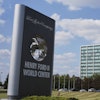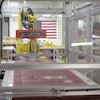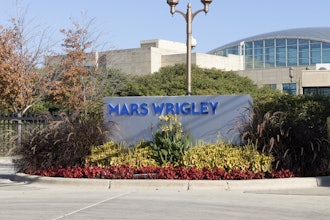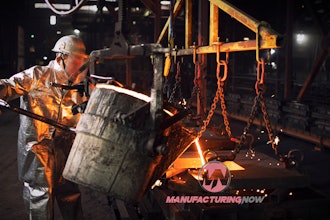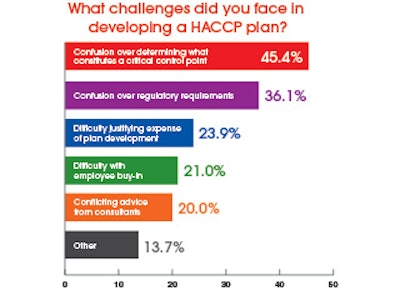
This article originally appeared in the March/April 2014 print issue of Food Manufacturing.
The Food Safety Update section of Food Manufacturing is designed to offer our readers insight into the state of food safety concerns across the industry. We received hundreds of responses to this month’s survey on HACCP Planning.
The Hazard Analysis and Critical Control Point (HACCP) system was developed in the 1960s by the Pillsbury Corporation, the National Aeronautics and Space Association (NASA) and the U.S. Army to provide safe foodstuffs for the first manned space missions. The food manufacturing industry began implementing HACCP widely since the 1970s to ensure food safety. HACCP is now endorsed by the Food and Agricultural Organization and the World Health Organization of the United Nations.
With the signing of the Food Safety Modernization Act in early 2011, the Food and Drug Administration mandated preventative controls closely modeled after the HACCP plans that meat, poultry, seafood and juice facilities have been required to use since the late 1990s. Many food manufacturers along the product spectrum are developing HACCP plans at the request of their customers, often grocery chains, and to meet third-party certifications. Deadly pathogen outbreaks and food allergies in the ever-widening food supply system have encouraged manufacturers to get their data in line should they be called upon to prove they acted responsibly.
Nearly 68 percent of respondents to a Food Manufacturing survey said a commitment to food safety prompted the development of a HACCP plan in their facility, followed by 53 percent who were cued by regulatory requirements. Nearly 40 percent of respondents said customer demands were a major motivator in HACCP development.
Instituting a new system can be a challenge in an often constant production environment. Forty-five percent of respondents said they faced confusion over determining what constitutes a critical control point (CCP). A critical control point is a specific point, procedure or step at which control can be exercised to reduce, eliminate or prevent the possibility of a food safety hazard.
The second most-frequent challenge in HACCP planning was confusion over regulatory requirements, cited by 36 percent of respondents. Another 24 percent had difficulty justifying the expense of HACCP plan development. Roughly 20 percent noted difficulty with employee buy-in. Twenty percent also encountered conflicting advice from consultants.
Several respondents said that the time required to develop, document and to implement the plan was a challenge. Others noted that determining the hierarchy in implementing CCPs was onerous. Alternate exacting tasks in HACCP planning included satisfying all the customers that audit the company, as well as varying CCP requirements from different customers.
Nearly half of respondents said they initially consulted internal QA/QC experts when developing their HACCP plan. Almost 43 percent employed consultants in the process. Thirty-seven percent inquired with government agencies. Respondents also named employees, customers, universities and equipment vendors as resources to a lesser extent.
Dedicating time to develop a HACCP plan can save effort down the road in case of a recall or to assure customers, as well as consumers, that food from a plant is safe.
One-third of respondents said they spent three to six months developing a HACCP plan. Nearly 27 percent spent zero to three months on the process and nearly 23 percent spent six to nine months on HACCP plan development. Just 17.5 percent took nine months or more to develop a plan for their facility.
But HACCP planning doesn’t end once a strategy is initially developed. Nearly 52 percent of respondents said that HACCP plans are a living document that is constantly open to revision. Thirty percent of respondents said they revise their plan once a year. Just more than eight percent revisit the plan less than once annually. Six percent revise HACCP twice a year and three percent revise it quarterly.
Input from various sources helps survey respondents shape their ongoing HACCP plans.
Fifty-seven percent of respondents said that internal QA/QC experts were key to effective HACCP planning in their facility. Government agencies were also vital resources for nearly 47 percent of respondents. Customers supplied support to roughly 48 percent of respondents. Employees aided 38 percent in revision, while consultants assisted 25 percent of respondents.
It seems that the effort respondents put into HACCP construction and revision is well worth it. Approximately 56 percent said they were satisfied with their facility’s HACCP plan. Another 32 percent considered themselves very happy with their plan. However, roughly 9 percent said the plan needs adjustment/improvement, and four percent were skeptical of the HACCP planning process in general.
The facilities of most respondents to the survey, 65 percent, did not develop HACCP plans that required more tailored HACCP planning guidance, like those that produce poultry, meat, seafood or juice. However, 35 percent of respondent’s facilities did.
The passage FSMA had a mixed effect on facilities’ HACCP plans. Fifty-three percent of respondents said FSMA did not cause them to change or update the plan, while 47 percent said it prompted revisions.
Food defense and emergency response, which is designed to protect food from intentional adulteration by biological, chemical, physical or radiological agents, is a vital aspect of FSMA. Food defense runs the gamut from physical plant and information security to restricting access to ingredients and chemicals and hazardous materials on site. Nearly 51 percent of respondents said they already incorporated food defense vulnerabilities into their plans. Another 26 percent are evaluating the incorporation of these vulnerabilities into their plan. About 21 percent said they plan to incorporate them, while almost seven percent said they will not.
The majority of respondents, 34 percent, were operating facilities with fewer than 50 employees. Twenty-two percent operated facilities with 101-250 employees, and roughly 17 percent each operated plants with both 50-100 employees and 251-500 employees. Just 5.3 percent of respondents employed more than 1,000 at their locations, and roughly five percent had 501-1,000 employees.
Follow Holly on Twitter at @foodmfged. For more food industry news and information, subscribe here and follow us on Twitter, Facebook or LinkedIn.
